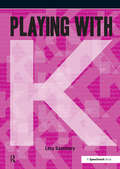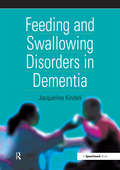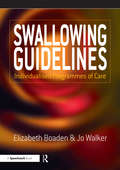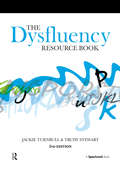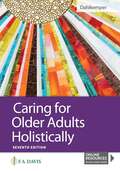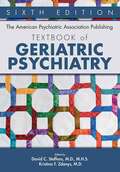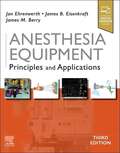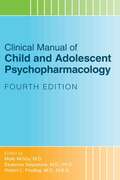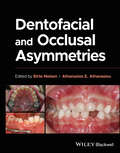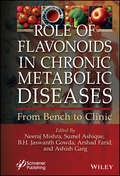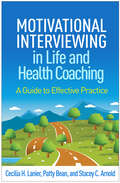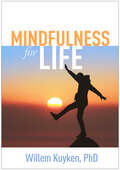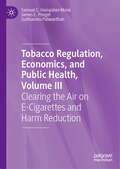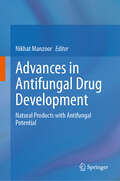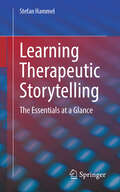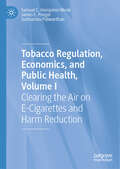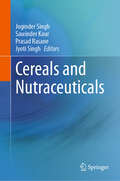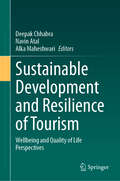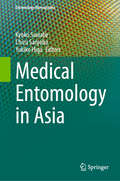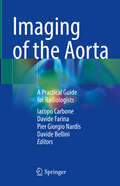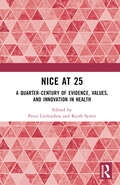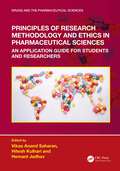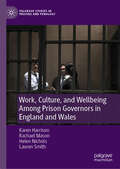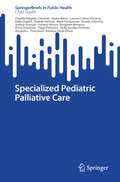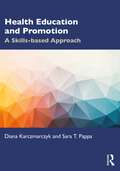- Table View
- List View
Playing with ... K
by Lucy SanctuaryThis diverse and practical resource presents activities, games and ideas to support children who have speech sound difficulties between the age of 3 - 7 (older if used with children with a learning difficulty), eg developmental delay, disordered speech sounds, developmental apraxia of speech. The book is divided into seven main sections: mouth exercises (oro-motor exercises); single sounds (k); short words - consonant + vowel, eg, car, key, cow; longer words that begin with the speech sound k - consonant + vowel + consonant, eg, comb, can, cap; longer words that end with k, eg, book, bike, duck; words with more than one syllable that begin with k, eg, cooker, coffee, camel, caterpillar; and, using words in sentences. Each section provides the opportunity for the child to hear the speech sound in isolation and in words before they try to say it (ie receptive and expressive activities). Includes: different activities to practise listening and saying the target sound/word; drilling games - ie the opportunity to hear the speech sound in isolation and in words, and to say them in increasingly challenging sequences in a game format; games that can be played with the picture cards of the words the child is working on; and, an auditory bombardment section composed of funny rhymes containing the words, the child has been working on in the section. The resource contains simple, accessible information on the development of speech sounds and specific information about the speech sound k. Examples of session plans using the resource are included in the book to help users plan work.
Feeding and Swallowing Disorders in Dementia
by Jacqueline KindellThis informative manual draws on expert research to highlight the feeding and swallowing difficulties that can occur with dementia. It is also a practical guide that offers potential strategies to manage these problems. Professionals are encouraged to focus on the needs of the individual by providing practical questions that should be asked when making an assessment. This is achieved through a step-by-step process, which allows a worker to observe, document and manage feeding and swallowing difficulties. Forms, schedules and checklists that can be photocopied are provided to aid in implementation. This is a detailed, practical resource which offers support and direction for speech and language therapists, and others with an interest in swallowing problems, working with people with dementia. It includes case studies to illustrate theory in practice, as well as a wide ranging bibliography.
Swallowing Guidelines: Individualised Programmes of Care
by Elizabeth Boaden Joanne Walker Jo WalkerThis book and downloadable resources are the simple answer to a busy therapist's problem. It enables the therapist to meet their professional responsibility to inform patients and carers of relevant dysphagia instructions by designing contemporaneous written information, advice and therapy. Using downloadable resources, Swallowing Guidelines allow you to produce multiple individualised programmes that may be emailed or posted to the individuals, their carers or other professionals in any location. The programme sheets offer comprehensive advice covering all aspects of dysphagia care in clear unambiguous language. All that the therapist needs to do is highlight the sections pertinent to their patient and the programme is created. As the individual's status changes, the programme can be quickly amended to reflect their changing needs. The downloadable resources and accompanying template ensures that individualised programmes are comprehensive and produced efficiently thus maximising the use of clinical and administrative time. Elizabeth Boaden: Principal Speech & Language Therapist of Adult Service, teaches dysphagia at an undergraduate and post-graduate level to speech language therapists and nurses. She is currently studying for a PhD at the University of Central Lancashire on the efficacy of training pre-registration nurses to perform swallow screening. Jo Walker: Specialist Speech & Language Therapist, works in acquired neurology at Chorley South Ribble PCT. She also provides a Speech Language service for the Community Acquired Brain Injury Rehab Team and is currently seconded to the Cumbria and Lancashire Workforce Development Confederation, working on an educational project in acquired brain injury.
The Dysfluency Resource Book
by Jackie Turnbull Trudy StewartThis is a comprehensive resource book for treating adults who stammer. Completely revised and updated to take account of current practice, this new edition draws together the latest information on therapy for adults along with practical examples of exercises, tasks and activities that can be used for both individual and group programmes. With new chapters and therapy ideas, this is an extremely useful resource for all speech & language therapists and students working with adults who stammer. This useful resource seeks to explain techniques for treating people who stammer and the rationale for their use. This volume forms a catalogue of treatment options from which clinicians may choose to use all of the techniques or pick out particular sections according to their clients' special requirements. The first edition of this book proved to be a very useful tool for speech and language professionals, and this new edition has come about largely because clinicians, speech and language therapists and teachers have requested it. With the inclusion of 50 photocopiable handouts and the presentation of the chapters in the order they would use with their own group programmes, the authors set out the principles of therapy in such a way that the treatment techniques fit into a clear management approach. Trudy Stewart is a specialist in dysfluency and has been a service manager since 1986. She studied in America and obtained her PhD in 1991. Jackie Turnbull retired from SLT in July 2009 after 40 years in the profession, over 35 of which were spent as a specialist in dysfluency, working with children and adults. She also worked for many years as a staff counsellor in a large hospital. The collaboration that has grown up between the two of them has sparked further study in stammering. Together they have developed a highly creative clinical practice which has national recognition.
Caring For Older Adults Holistically
by Tamara R. DahlkemperBe prepared to meet the growing demand for licensed practical/vocational nurses with the knowledge and skills to provide quality care to older adults. Easy-to-understand writing and a positive outlook enliven every page of this popular resource. Step by step, you’ll master the knowledge and skills you need, while also honing the leadership, management, and delegation abilities essential to your professional success. Feel confident in an important area as this text considers common myths about aging and includes applicable case studies to prepare you for a future career working with older adults.
The American Psychiatric Association Publishing Textbook Of Geriatric Psychiatry
by Kristina F. Zdanys David C. SteffensOver the course of more than two decades and five previous editions, The American Psychiatric Association Publishing Textbook of Geriatric Psychiatry has established itself as a foundational resource in the field. This new edition retains the multidisciplinary and developmental perspectives of its predecessors, drawing on the knowledge not only of psychiatrists but also of relevant biomedical and behavioral experts in order to present the most comprehensive approach to patient care. It has been extensively updated to reflect the latest scientific advances and clinical developments in the field. Not only will readers find the most up-to-date information on phenomenology, diagnosis, and assessment of late-life mental disorders, they will also access the latest research on psychotherapeutic, psychopharmacological, and other somatic treatments. A dedicated chapter delves into the role of technology―including digital phenotyping, wearables, digital and Web-based neurocognitive testing, and more―in aiding the geriatric mental health workforce and improving both access to care and ongoing support. Throughout the book, several sections also candidly examine the impact of COVID-19, and its attendant social isolation, on older adult mental health and the evolution of treatment approaches, revealing insights learned about telepsychiatry and care in nursing homes during the pandemic. Chapters on the legal and ethical factors in the psychiatric care of older adults close out the book, the most exhaustive on the topic. Extensively researched and with key points for ease of reference, this edition will equip both the scholar and the clinician with the current state of scientific understanding as well as the practical skills and knowledge base required for dealing with mental disorders in late life.
Anesthesia Equipment: Principles And Applications
by James B. Eisenkraft Jan Ehrenwerth James M. BerryOffering highly visual, easy-to-read coverage of the full range of anesthesia equipment in use today, this authoritative reference is your go-to text for objective, informed answers to ensure optimal patient safety. Anesthesia Equipment, 3rd Edition, provides detailed information on the intricate workings of each device or workstation, keeping you fully up to date and helping you meet both equipment and patient care challenges.
Clinical Manual Of Child And Adolescent Psychopharmacology
by Robert L. Findling Ekaterina Stepanova Molly McVoyWhen it comes to the use of psychotropic agents in pediatric patients, it is not merely a question of extrapolating data from adults to children and adolescents; special consideration must be given to the effects of the drug on developing bodies and brains. That is what makes this fourth edition of the Clinical Manual of Child and Adolescent Psychopharmacology so essential. Updated to include a succinct yet thorough review of the most recent evidence-based information and data-driven best treatment practices in child and adolescent psychiatry, this new volume is organized by DSM-5-TR diagnosis and offers an exhaustive analysis of the use of drugs in nine disorder categories that include depressive disorders, attention-deficit/hyperactivity disorder, autism spectrum disorder, eating disorders, and early schizophrenia and psychotic illnesses. Each chapter includes comprehensive medication tables that allow easy reference of dosing, side effects, and tips for management as well as key points that summarize the most essential information for treating clinicians. Whether they are clinical psychiatrists, medical students on psychiatry rotation, advanced practice providers, or pediatricians, readers will benefit from the depth of information in this indispensable desktop reference.
Dentofacial and Occlusal Asymmetries
by Birte Melsen Athanasios E. AthanasiouComprehensive and accessible resource that covers all crucial aspects of dentofacial and occlusal asymmetries Dentofacial and Occlusal Asymmetries covers all crucial aspects of asymmetries encountered in the stomatognathic region regarding diagnosis, treatment planning, management, and prognosis. Divided into three core sections, the first part focuses on the etiology of asymmetry and whether it is congenital or acquired through disease or trauma. The second and third sections go on to discuss localization and management, providing information on topics such as interception, correction, and camouflage. Specific sample topics covered in the book include: Treatment approaches: interceptive, tooth movements, goal-oriented biomechanics, and jaw repositioningTreatment principles: dentofacial orthopedics, camouflage, and orthodontic-surgical treatmentLocalization and problem list: medical and dental history, clinical examination, dental cast analysis, and radiographic/imaging assessmentMedical, social and psychological aspects: growth disorders and helping children and their families with facial differences Written by a team of renowned experts in the field, Dentofacial and Occlusal Asymmetries will serve as an invaluable resource to postgraduates in orthodontic, pediatric dentistry, and oral and maxillofacial surgery programs as well as orthodontists, pediatric dentists, pediatricians, and oral and maxillofacial surgeons aiming for optimal results in the diagnosis and management of these complex malocclusions and dentofacial deformities.
Role of Flavonoids in Chronic Metabolic Diseases: From Bench to Clinic
by Neeraj Mishra Sumel Ashique Ashish Garg Arshad Farid B.H. Jaswanth GowdaThis comprehensive volume covers the entire field of flavonoids by explaining their complex functions in reducing chronic metabolic illnesses, from the early stages of laboratory research to the development of therapeutic uses. Flavonoids are plant-based substances proven to have potential medical benefits in managing chronic metabolic disorders. This book explores concepts in laboratory research and therapeutic capabilities to enhance awareness of flavonoids in a medical context. The book begins with a thorough examination of the basic biochemical and molecular processes that underlie long-term metabolic disorders. It looks into these bioactive substances, from their natural origins to the synthesis of innovative derivatives. Analyzing both lab research and preclinical trials critically, it provides a solid basis for understanding the exciting opportunities flavonoids bring in treating metabolic diseases. The scope of this work extends beyond theoretical domains into clinical environments. It closes the gap between bench-side findings and bedside applications by revealing the translational potential of flavonoids. It is possible to understand the practical implications and future directions of flavonoid-based therapeutics through the synthesis of evidence-based clinical studies, therapeutic approaches, and possible healthcare issues. Readers will find the book: contains cutting-edge insights into metabolic disease research and delves into recent discoveries on the molecular mechanisms of flavonoids; facilitates a viewpoint into the findings of practical clinical implementations and the progression of flavonoid investigations from controlled experimental environments to prospective therapeutic interventions; explores the scientific effects of flavonoids on chronic metabolic disorders; presents evidence from human trials and epidemiological research on flavonoid clinical processes; encompasses various aspects of preventive measures for managing widespread metabolic diseases, containing dietary recommendations, lifestyle interventions, and the potential involvement of flavonoids; offers a comprehensive guide on how to effectively utilize flavonoids for therapeutic purposes. Audience This book is intended for researchers, scientists, clinicians/physicians, and public health professionals who work in pharmacology settings. The book is a vital tool for clinicians, nutritionists, and other healthcare professionals who are concerned about cutting-edge methods for dietary guidelines to gain an understanding of flavonoids and long-term metabolic disorders.
Motivational Interviewing in Life and Health Coaching: A Guide to Effective Practice (Applications of Motivational Interviewing Series)
by Cecilia H. Lanier Patty Bean Stacey C. ArnoldWritten by and for coaches, this groundbreaking book shows how motivational interviewing (MI) can be infused into health and wellness coaching and life coaching to help clients clarify and achieve their goals. Cecilia H. Lanier, Patty Bean, and Stacey C. Arnold concisely explain how the MI spirit, method, and skills mesh perfectly with professional coaching standards and core competencies. The book is packed with concrete examples, sample dialogues that illustrate ways to use MI in coaching conversations, and learning questions and activities. The companion website features 20 downloadable handouts plus an overview of research support for coaching with MI.
Mindfulness for Life
by Willem KuykenMindfulness is exceptionally easy to get started with, and people often experience benefits almost immediately. Why, then, do many initial enthusiasts end up dropping the practice after a short while? According to Oxford professor and leading mindfulness expert Willem Kuyken, it's because traditional mindfulness training is too far removed from how we actually live. This next-generation resource brings mindfulness home by teaching core skills in easy-to-integrate ways that touch directly on life's daily challenges. Dr. Kuyken provides stepping stones to help you build a personal practice that is sustainable, purposeful, and richly rewarding--now and for years to come. Interweaving ancient wisdom and modern scientific psychology, the book includes stories, quotations, reflection questions, tips for overcoming hurdles, and compelling guided practices, including audio tracks at the companion website.
Tobacco Regulation, Economics, and Public Health, Volume III: Clearing the Air on E-Cigarettes and Harm Reduction
by Samuel C. Hampsher-Monk James E. Prieger Sudhanshu PatwardhanWhat role should the tobacco industry have in the e-cigarette market? Should manufacturers contribute to the production of evidence on their products’ safety and efficacy? What are the environmental impacts of e-cigarette use and how should these feature in the discussion? How do e-cigarettes influence smoking-related health disparities? Should physicians recommend switching to e-cigarettes for those who smoke? How broadly applicable is the utility of e-cigarettes? And how should the discourse respond to emerging data? This volume examines the opportunities and challenges of optimizing e-cigarette regulation. The authors describe emerging evidence suggesting that restrictions on e-cigarettes can backfire by nudging consumers toward riskier alternatives. Adopting a social welfare-based approach drawing on economics, policy analysis and regulatory science, the authors then explore how optimal e-cigarette policy might balance risks and benefits, suggesting that it is possibleto leverage the promise of e-cigarettes—a product that is more popular than traditional cessation aids—to protect current and future generations from the smoking-related harms, while still taking important steps to discourage use by young people and those who do not smoke.
Advances in Antifungal Drug Development: Natural Products with Antifungal Potential
by Nikhat ManzoorThis book explores the antifungal properties of natural products and reviews their antifungal mechanism. An introductory chapter illustrates the various fungal pathogenic species, common fungal diseases, and general mechanisms of action of various antifungal classes, including natural products. The book comprises seven sections and each section contains chapters on the efficacy and antifungal mode of action of plant extracts, essential oils, natural compounds, their derivatives, and plant-based nanoparticles. A section summarizes the antifungal efficacy of compounds derived from sources other than plants, like microbes. Besides compound toxicity, the book explores the antifungal mode of action and efficacy against the virulence and pathogenicity of fungal pathogens like Candida, Aspergillus, Cryptococcus, Histoplasma, and other pathogenic fungi. Further, the book also describes recent advancements in the discovery of novel drug targets and therapeutic strategies that are non-toxic and more efficacious for combating drug resistance. This book is an invaluable source for researchers working in the field of fungal biochemistry, anti-microbial, and anti-bacterial and undergraduate and postgraduate students of microbiology and pharmacology.
Learning Therapeutic Storytelling: The Essentials at a Glance
by Stefan HammelThe book provides a hypnosystemically grounded introduction to therapeutic storytelling in medicine, child therapy, adult psychotherapy, couples therapy, family therapy, social work, pastoral care, education, coaching, supervision, and related professional fields.Contents include:The relevance of storytelling to therapy.Why, when, and how stories have therapeutic effects.Where I can use therapeutic stories.How to find the right story for the right moment.Structuring a therapeutic story.How to start and continue.Enhancing narrative skills.About the Author:Stefan Hammel works as a systemic therapist, hypnotherapist, and author. He is also an protestant hospital and psychiatric chaplain, as well as the director of the Institute for Hypnosystemic Counseling in Kaiserslautern. Additionally, he serves as a lecturer for systemic and hypnotherapeutic training institutes in Germany, Austria, and Switzerland. He conducts seminars on Ericksonian hypnotherapy, therapeutic storytelling, systemic and hypnosystemic counseling. His main areas of focus include couple and family therapy, therapy for children and adolescents, depression, anxiety, trauma, end-of-life and grief counseling, as well as supporting somatic healing processes.
Tobacco Regulation, Economics, and Public Health, Volume I: Clearing the Air on E-Cigarettes and Harm Reduction
by Samuel C. Hampsher-Monk James E. Prieger Sudhanshu PatwardhanThe first volume of this three-volume resource presents a historical analysis of the practice of smoking, the rise and fall of the cigarette market, and the successes and failures of tobacco control. While taxes, regulations, and various behavioral and pharmacological interventions have helped many people to quit smoking, they have not helped everyone. The authors explain why these strategies alone are likely insufficient to elicit smoking cessation among the remaining group, and why “ramping up” these strategies may also backfire. Drawing on examples from the U.S., Australia, Canada, and the United Kingdom, this volume introduces the technology of e-cigarettes, explaining the origins of the innovation, patterns of use among consumers, and the perception of e-cigarettes among key stakeholder groups.
Cereals and Nutraceuticals
by Jyoti Singh Joginder Singh Sawinder Kaur Prasad RasaneThis book is focused on the production, cultivation, processing, composition, nutritional value, value addition, health implications, limitations and safety of nutricereals with an emphasis on their functional significance. With changing food habits and increasing health concerns, consumers around the world are opting for a more nutritious diet than that was consumed until recently. Nutricereals are now becoming a food of choice for many and newer products are being developed using them. Thus, a better understanding of these valuable crops is becoming essential. Researchers and scientists around the world have now turned their attention to nutricereals as a cheaper and most important solution to nutritional deficiencies. Processing of these cereals is matter of advanced research in recent times to make it suitable and palatable for human consumption and taste, and hence high emphasis is given on processing and value addition of these cereals. A comprehensive account of these important aspects is highly required. The book covers specific aspects of the nutricereals of consumption pattern and acceptance and the cultivation practices and health benefits associated with their consumption. Considerations on processing, value addition and safety associated with various nutricereals and current and future challenges and the opportunities for its utilization are highlighted in the book. This book forms an important resource on nutricereals for food technologists and food scientists.
Sustainable Development and Resilience of Tourism: Wellbeing and Quality of Life Perspectives
by Deepak Chhabra Navin Atal Alka MaheshwariThis volume examines progress in sustainable and resilient development of niche forms of tourism from a health and wellbeing perspective. It also aims to offer deep and innovative insights on the supporting role of non-pharmaceutical interventions to enhance resilience and wellbeing of visited and visiting communities. A comparative and critical discourse of the role of hard medicine is also offered, from both a core and supplementary perspective, particularly, from eudaimonic and physiologically restorative standpoints. Furthermore, indigenous non-pharmaceutical interventions and spiritual healing mechanisms are discussed in the context of their potential to facilitate long term immunity and happiness. The book conceptually situates health as a fourth pillar of sustainability, and examines its role in stimulating long-lasting transformations rooted in positive psychology, inner transformation and sustainable consumption of organic productsand services. It designs an evolving transformational ‘Quality of Life’ paradigm that strengthens the foundations of health/wellbeing-based sustainable development initiatives and resilience of tourism systems. The work will be of interest to academic, professional, and various public and private stakeholders of tourism such as destination marketing organizations, policy makers, hospitality industries, tour operators, host communities, NGOs, and government agencies.
Medical Entomology in Asia (Entomology Monographs)
by Kyoko Sawabe Chizu Sanjoba Yukiko HigaThis book presents the latest findings in medical entomology in Japan and neighboring Asian countries. It provides an overview of the current issues of medically important arthropods in this region and also refers to the issues that are likely to become more serious in the near future. It helps us understand that addressing the arthropod issues is not enough in limited regions, but requires a coordinated response throughout these regions. Global warming and globalization are affecting both vector and vector-borne diseases, causing rapid changes in their distribution and ecology. From the perspective of global pest control, the book focuses not only on domestic pests in Japan but also on pests in neighboring Asian countries including the Philippines, Thailand, Taiwan, Vietnam, etc., which are geographically and economically close to Japan. Japan has experience of eradicating malaria and lymphatic filariasis, drastically reducing the number of cases of Japanese encephalitis patients, and succeeded in controlling flies in the metropolis of Tokyo. The know-how learned and created from these past successes should provide valuable information for other parts of Asia that are still struggling with pest infestation today. With the growing interest in these issues worldwide, this book provides essential information in medical entomology for researchers, including students and early career researchers. By integrating the latest findings in medical entomology with past successes and experiences in the field, the book is also a valuable reference for many professionals planning sustainable pest control.
Imaging of the Aorta: A Practical Guide for Radiologists
by Iacopo Carbone Davide Farina Pier Giorgio Nardis Davide BelliniThis book provides younger radiologists with a practical guide to aortic imaging, from acquisition to reporting. It discusses the pros and cons of the different available techniques and offers tips for the optimization of acquisition protocols and it covers the most frequent aortic pathologies, from a diagnostic and interventional point of view. Report building is discussed starting from standardized terminology; for each pathology, the book lists, in a simple and schematic way, the key points that must be included in the report of a cross-sectional study. Checklists used by clinicians and radiologists in routine practice are also included, and iconography is enriched by numerous stand-alone images. The Authors have long-standing experience in cardiovascular imaging and interventional procedures and with this publication they are providing a useful guide in everyday clinical practice.
NICE at 25: A quarter-century of evidence, values, and innovation in health
by Keith Syrett Peter LittlejohnsMarking its 25th anniversary, this fascinating collection examines the pioneering work of the National Institute for Health and Care Excellence (NICE).Setting standards for the delivery of healthcare, issuing guidance on public health, and assessing and making recommendations on health technologies, NICE has attracted widespread international attention, emulation, and comment. The authors in this collection, drawn from a broad range of disciplinary backgrounds, offer analysis of key issues which have informed NICE’s work, from the principles of health economics, to patient engagement, to the legal basis on which NICE operates.Covering many of the most important themes within contemporary debates on health policy and management today, this insightful collection will interest students and researchers, as well as policy makers in the field.
Principles of Research Methodology and Ethics in Pharmaceutical Sciences: An Application Guide for Students and Researchers (ISSN)
by Vikas Anand Saharan Hitesh Kulhari Hemant JadhavPharmaceutical researchers are constantly looking for drug products, drug delivery systems and devices for improving the health of society. A scientific and systematic search for new knowledge requires a thorough understanding of research methods and hypothesis design. This volume presents pharmaceutical research through theoretical concepts, methodologies and ethical issues. It fulfils publication ethics course work requirements for students. Chapters have been designed to cater for the curriculum requirements of universities globally. This serves as a guide on how to apply concepts in designing experiments and transforming laboratory research into actual practice.Features: · Complete coverage of research methodology courses for graduate and postgraduate students globally.· Step-by-step assistance in writing technical reports, projects, protocols, theses and dissertations.· Experimental designing in pharmaceutical formulation development and preclinical research designs.· Ethics in using animals in preclinical research and humans in clinical research.· Publication ethics, best practices and guidelines for ensuring ethical writing.· Hypothetical and real-world case studies on ethical issues and measures for prevention and control.
Work, Culture, and Wellbeing Among Prison Governors in England and Wales (Palgrave Studies in Prisons and Penology)
by Karen Harrison Lauren Smith Helen Nichols Rachael MasonThis book offers a focused and detailed insight into the health and wellbeing of prison staff, specifically focussing on prison leaders and managers. The authors bring together expertise from psychology, health, law, and criminology, to present a unique multidisciplinary examination of health and wellbeing based on interviews with Prison Governors’ Association members. Examining how the participants described their health and wellbeing at work and at home, the authors reveal dysfunctional culture, disenchantment and disengagement, the heavy weight of expectations and high levels of professional uncertainty relating to the future. It argues that more governor grade specific and arguably mandated support is needed. Recommendations from the book will contribute to improving health and wellbeing amongst the governor work force, feeding into positive outcomes in relation to staff retention and prison expansion challenges.
Specialized Pediatric Palliative Care (SpringerBriefs in Public Health)
by Paige Patterson Amanda L. Thompson Claudia Delgado-Corcoran Ryann Bierer Lauren Cramer Finnerty Katie Gradick Brandy Harman Mark Harousseau Brooke Johnston Sydney Kronaizl Dominic Moore Benjamin Moresco Betsy Ostrander Holly Spraker-Perlman Antonia Vitela-ElliottThis compact volume offers a brief overview of pediatric palliative care and emerging ways to expand and provide palliative care to children. Pediatric palliative care is a new specialty that is rapidly expanding across the United States. The specialty has impact throughout the lifespan of children with serious illness and supports patients, families, and those who care for children. Authored by clinicians with expertise and extensive experience in palliative care and hospice medicine, the topics covered in the volume's five chapters include: Introduction and Definitions Pediatric Palliative Care Involvement in Specific Disciplines Pediatric Palliative Care at End of Life Accessing Pediatric Palliative Care The Future of Pediatric Palliative Care Specialized Pediatric Palliative Care is essential reading for pediatric healthcare professionals with short, easy-to-read contents applicable to actual practice. Other providers and professionals working with children and families with serious illness also might find the book of interest.
Health Education and Promotion: A Skills-based Approach
by Diana Karczmarczyk Sara T. PappaThis comprehensive textbook provides students with an accessible overview of both the key concepts and practical skills required to work in the field of health education and promotion.Primarily aligned with the core competencies identified by the National Health Education Commission, Inc. Areas of Responsibility and designed as ideal preparation for those taking the Certified Health Education Specialist (CHES) examination, this book offers both the theoretical foundations and practical skills required to fulfill a range of roles. From program planning and evaluation to communication and leadership, each chapter details best practices based on the latest research, as well as case studies to show its application in multiple settings. Each chapter is also supported by discussion questions and activities to enable students to engage further with the content.This is an essential text for students taking a range of courses in health promotion, education, and planning, as well as those preparing for the CHES examination.
